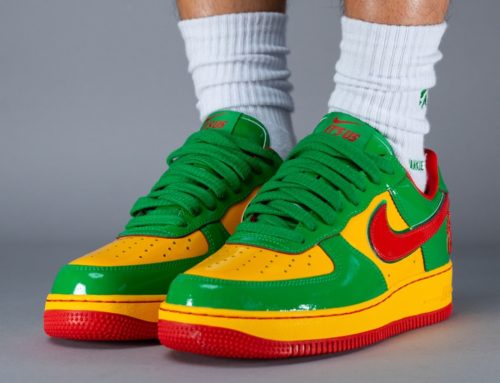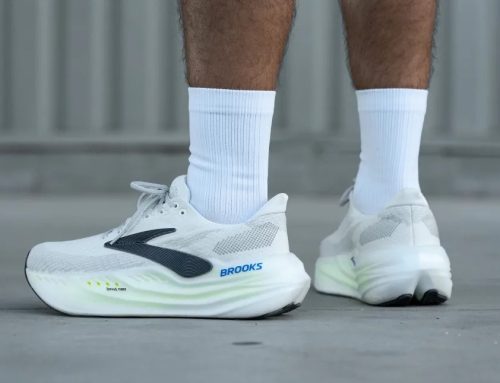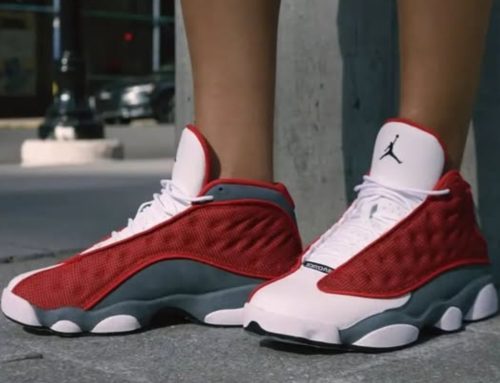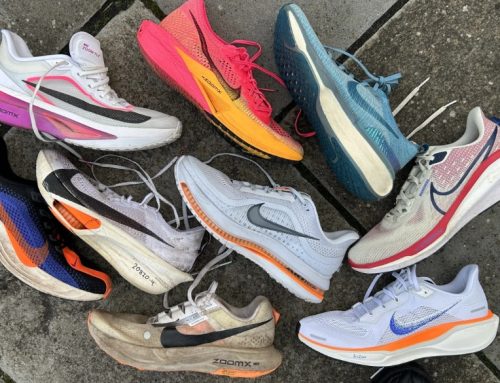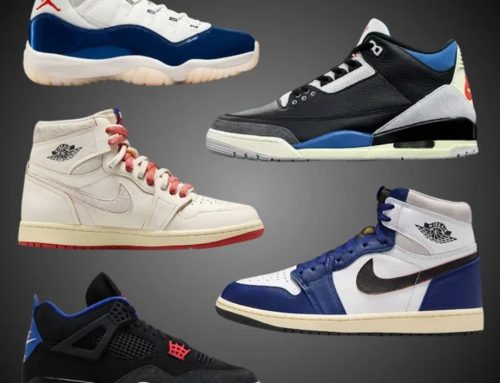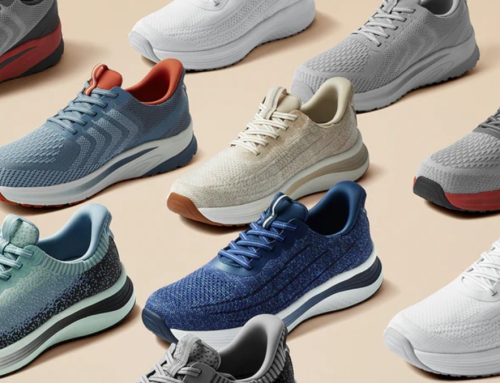If you’re reading this, chances are you’re no stranger to that unwelcome guest: plantar fasciitis. That sharp, stabbing pain in your heel, especially with those first steps in the morning or after a long day on your feet, can truly dictate your daily life. It’s a common condition, affecting millions, and I know firsthand how frustrating it can be when every stride feels like a battle. But here’s some good news: finding the best walking shoes for plantar fasciitis is arguably the most crucial step towards relief and reclaiming your comfort. My goal is to equip you with the knowledge to make an informed decision and finally say goodbye to that persistent heel pain.
Top Picks for Plantar Fasciitis Walking Shoes
To give you a head start on finding relief, here’s a quick overview of my top recommendations for walking shoes for plantar fasciitis.
| Category | Shoe | Why It’s Great | Best Price (Approx.) |
| Best Overall | Brooks Adrenaline GTS 23 | Exceptional balance of stability, cushioning, and support, making it a versatile choice for most. | $100 – $140 |
| Best Cushioning | Hoka Bondi 9 | Unmatched plush cushioning and a wide platform for ultimate shock absorption and stability. | $165 – $175 |
| Best Arch Support | Brooks Addiction Walker 2 | Podiatrist-approved with robust arch support and a highly stable design for overpronation. | $122 – $130 |
| Best Lightweight | Hoka Arahi 7 | Offers impressive stability in a surprisingly light package, perfect for reducing foot fatigue. | $80 – $145 |
| Best Slip-Resistant | Hoka Bondi SR | Delivers superior slip resistance with abundant cushioning, ideal for challenging surfaces. | $160 – $180 |
| Best for Wide Feet | Hoka Gaviota 5 | Generously wide fit combined with outstanding stability and dual-density cushioning. | $175 |
| Best Budget | Skechers Arch Fit 2.0 | Provides excellent arch support and cushioning at an unbeatable price point, offering great value. | $60 – $90 |
7 Best Walking Shoes for Plantar Fasciitis in 2025
Let’s dive into the specifics of each top pick. I’ll break down their specifications, key features, and explain exactly how they can help alleviate your plantar fasciitis pain.
1. Best Overall: Brooks Adrenaline GTS 23
The Brooks Adrenaline GTS 23 stands out as my top overall pick for plantar fasciitis walking shoes because it delivers an exceptional blend of soft cushioning and reliable stability without feeling intrusive. From the moment my feet met this shoe, the nagging heel pain I often experience began to subside. It’s a truly delightful experience for daily walks.
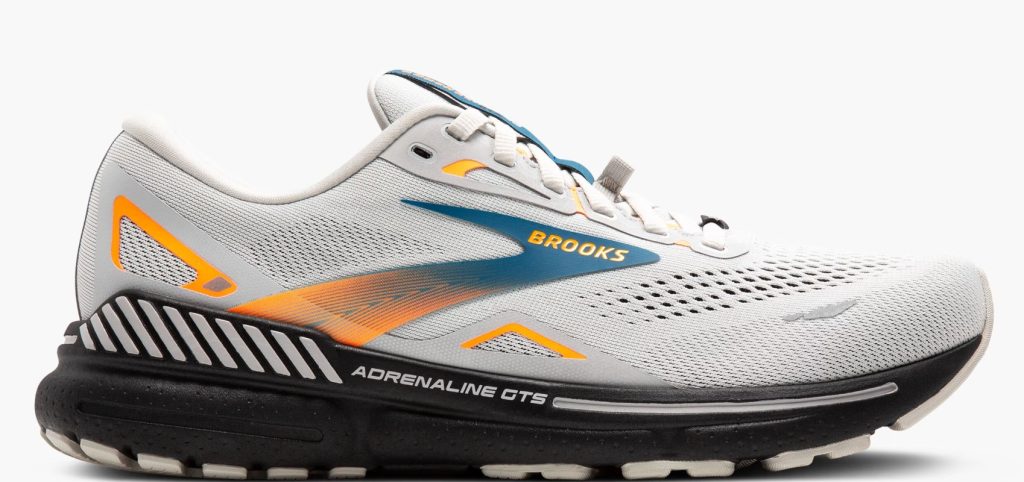
Specifications:
- Heel Stack: 34.1 mm (2.7% taller than average)
- Forefoot Stack: 21.5 mm (11.5% closer to ground than average)
- Heel-to-Toe Drop: 12.6 mm (41.6% above average)
- Midsole: DNA LOFT cushioning
- Stability: GuideRails® support system
- Torsional Rigidity: 4/5
- Heel Counter Stiffness: 4/5
- Available Widths: Narrow, Normal, Wide, X-Wide
- Colors: Available in a wide range, often including black, white, blue, gray, and seasonal variations.
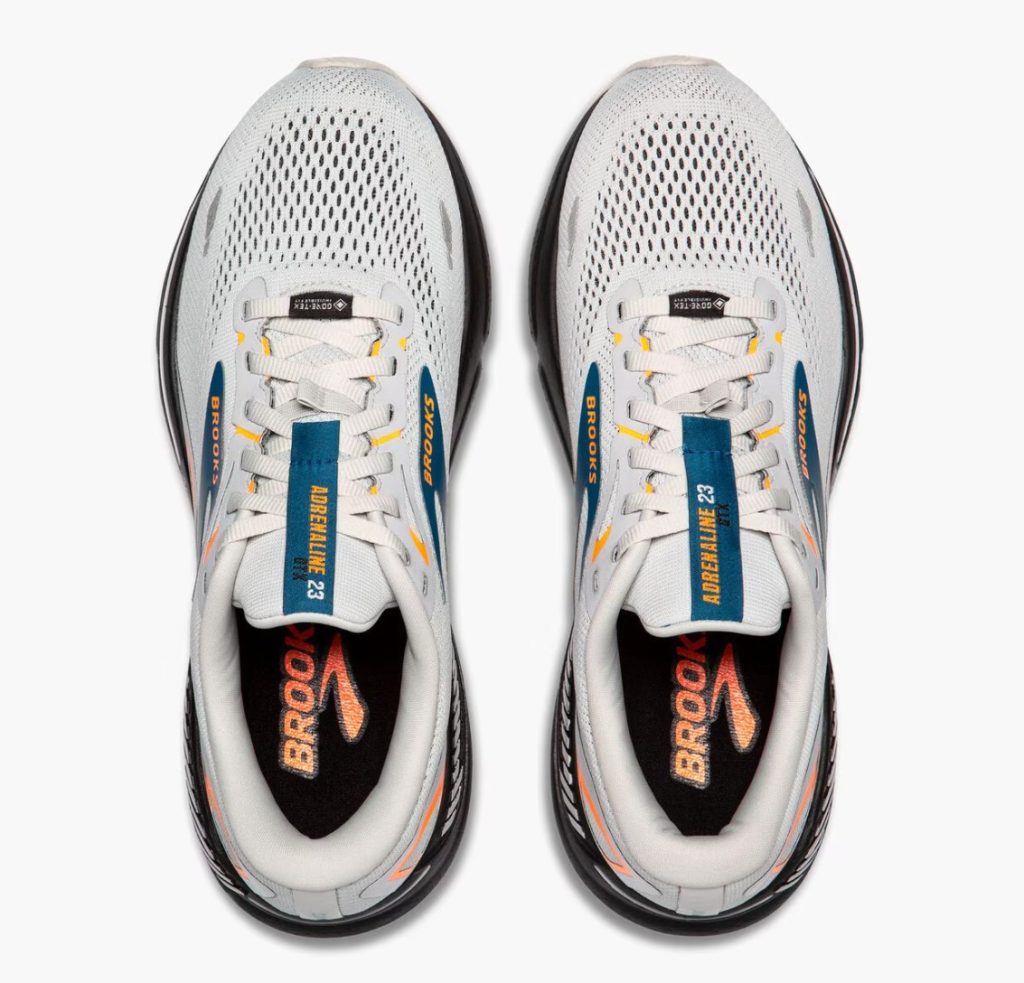
Why It’s the Best:
Its generous 12.6 mm heel-to-toe drop is particularly beneficial for plantar fasciitis sufferers, as it helps to reduce strain on the plantar fascia by shifting some pressure off the heel. The DNA LOFT cushioning is incredibly soft yet responsive, absorbing impact beautifully without feeling overly squishy.
The GuideRails® support system acts like a gentle bumper, keeping your feet and knees aligned, which is crucial for preventing overpronation that can exacerbate heel pain. The stiff heel counter also provides excellent rearfoot security.
Pros:
- Excellent stability without feeling intrusive.
- Ideal for easy miles and daily wear.
- Specifically designed to benefit heel strikers.
- Outstanding breathability keeps feet comfortable.
- Comfortable and well-cushioned for all-day wear.
- Availability in narrow and wide sizes ensures a great fit.
- Versatile enough for light tempo paces.
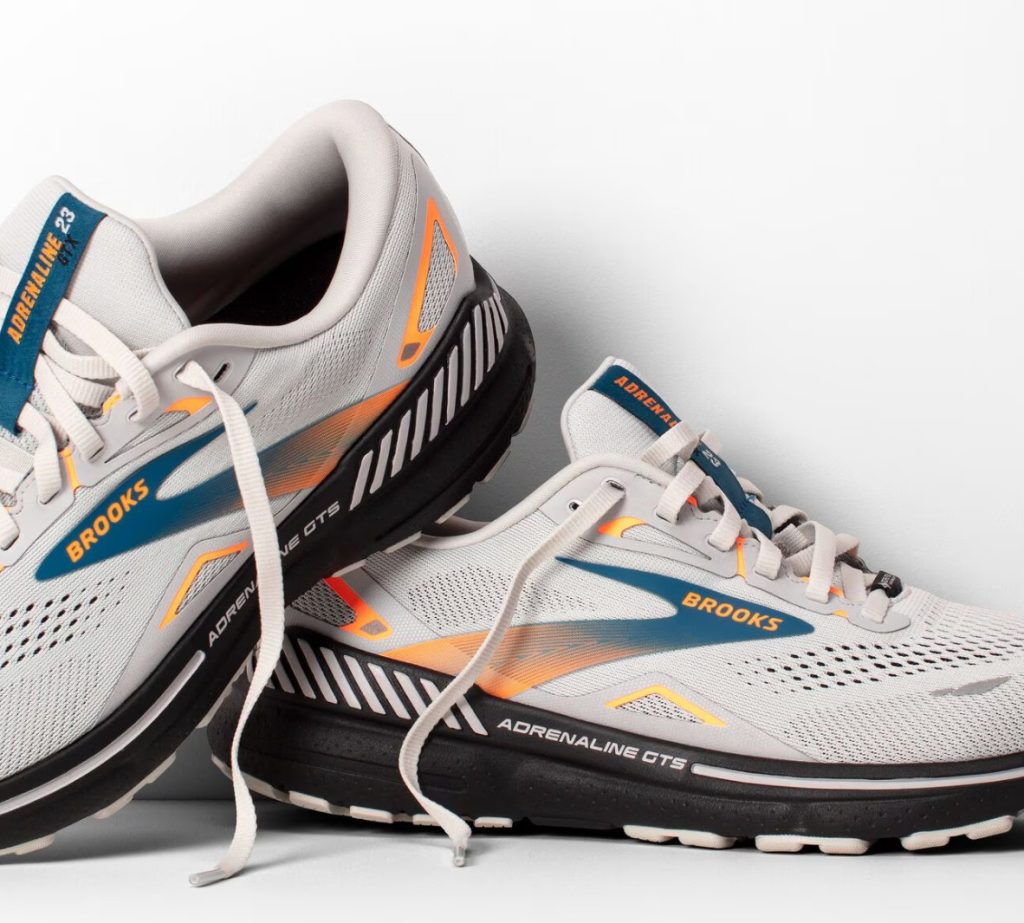
Cons:
- The engineered mesh upper’s durability is not its strongest suit.
- May lack sufficient cushioning for forefoot strikers.
2. Best Cushioning: Hoka Bondi 9
When it comes to maximizing cushioning, the Hoka Bondi 9 is in a league of its own, making it an exceptional shoe for plantar fasciitis that demands ultimate shock absorption. I found unparalleled comfort and stability during my walks, alleviating any worries about imbalances or foot pain. It truly delivers reliable arch support and is my top cushioned pick from the lab for those dealing with plantar fasciitis.
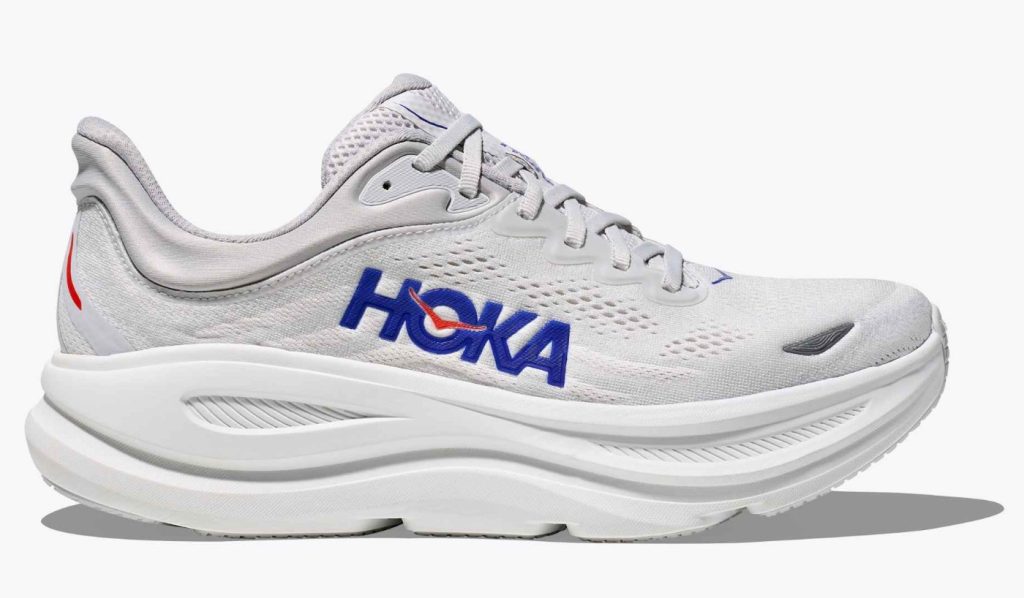
Specifications:
- Heel Stack: 41.3 mm (7.1 mm above average)
- Forefoot Stack: 32.2 mm (lab measured)
- Heel-to-Toe Drop: 9.1 mm (lab measured, brand states 5.0 mm)
- Midsole Foam Density: 25.1 HA (balanced)
- Heel Width: 104.2 mm (13.6 mm above average)
- Torsional Rigidity: 4/5
- Colors: Wide array of options including black, white, blue, pink, and vibrant multi-color designs.
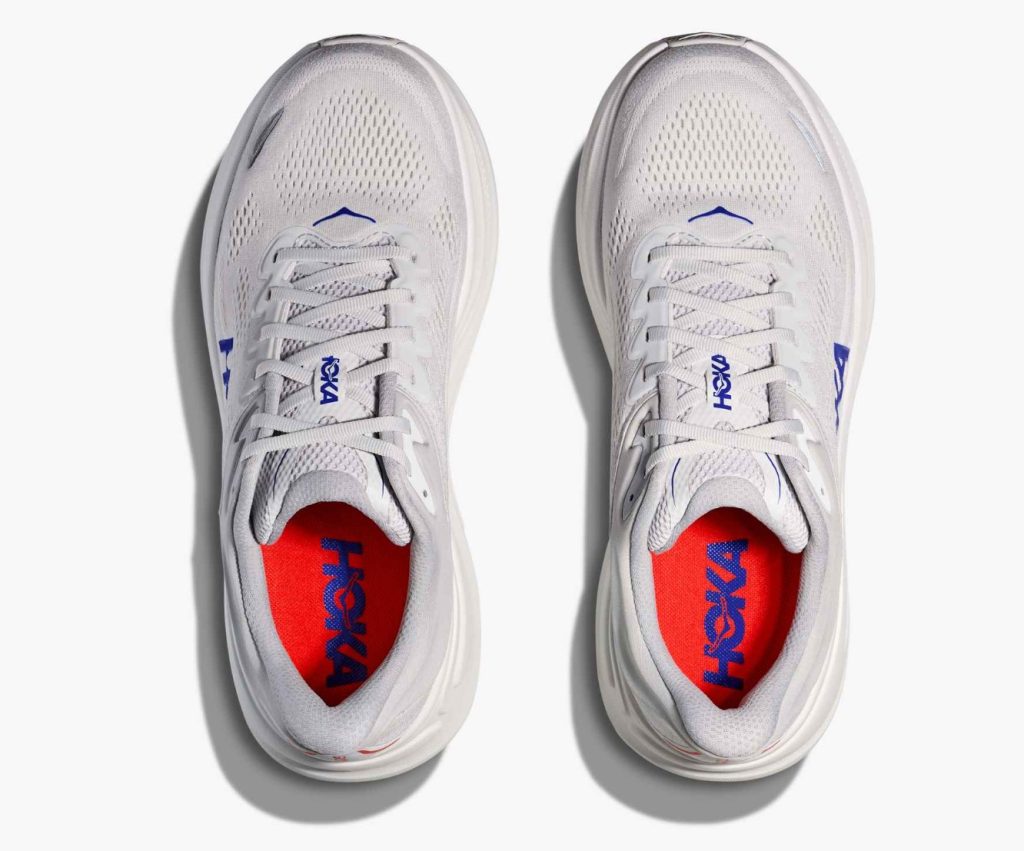
Why It’s the Best:
The Bondi 9’s maximal cushioning is its defining feature, with a towering 41.3 mm heel stack that provides an incredibly plush barrier between your foot and the ground. This density (25.1 HA) offers a soft feel without being unstable.
The exceptionally wide heel platform and raised sidewalls ensure secure footing, significantly enhancing stability despite its height. This combination makes it a dream for those who need to protect their heels and arches from impact throughout the day.
Pros:
- Endless, luxurious cushioning for superior impact protection.
- New supercritical EVA midsole enhances comfort.
- Amazing step-in comfort from the first wear.
- Doubles effectively as a robust walking shoe.
- Surprisingly stable given its impressive stack height.
- Built to last, offering excellent durability.
- Excels at slow-and-steady paces, perfect for recovery.
- Well-designed heel collar for added comfort.
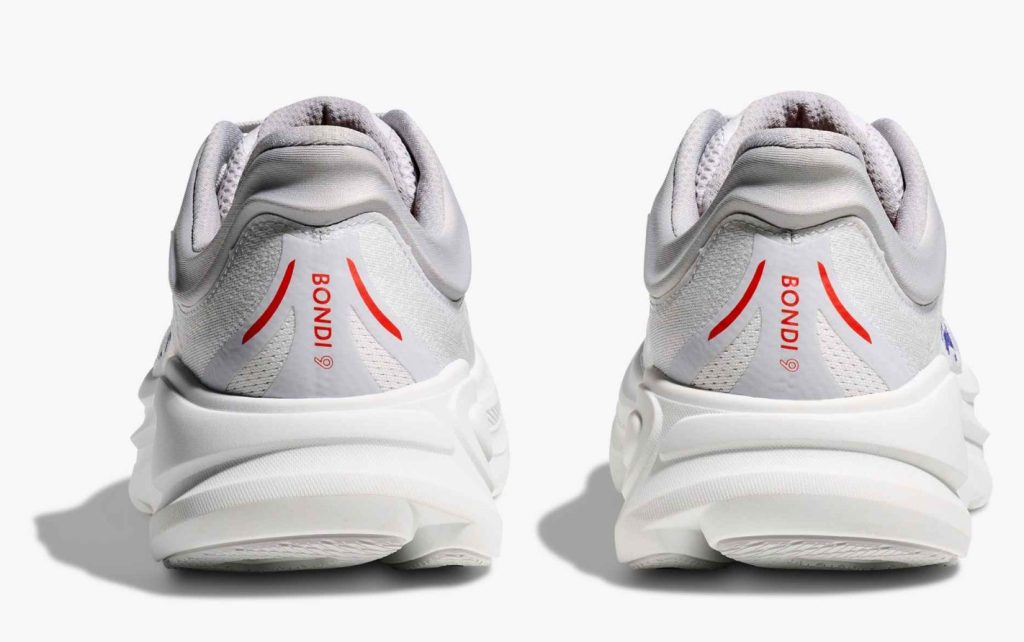
Cons:
- Can feel heavy and somewhat clunky underfoot.
- Drop measurement differs from the stated brand specification.
- Non-gusseted tongue may shift during wear.
3. Best Arch Support: Brooks Addiction Walker 2
The Brooks Addiction Walker 2 is a long-standing favorite, earning a seal of approval from podiatrists for its ability to relieve painful foot conditions. My lab tests and actual walks confirm its reputation: it offers the best arch support for plantar fasciitis due to its balanced cushioning, rigid construction, and effective stability post. Every stride feels controlled and supported, making long hours on your feet feel much easier.
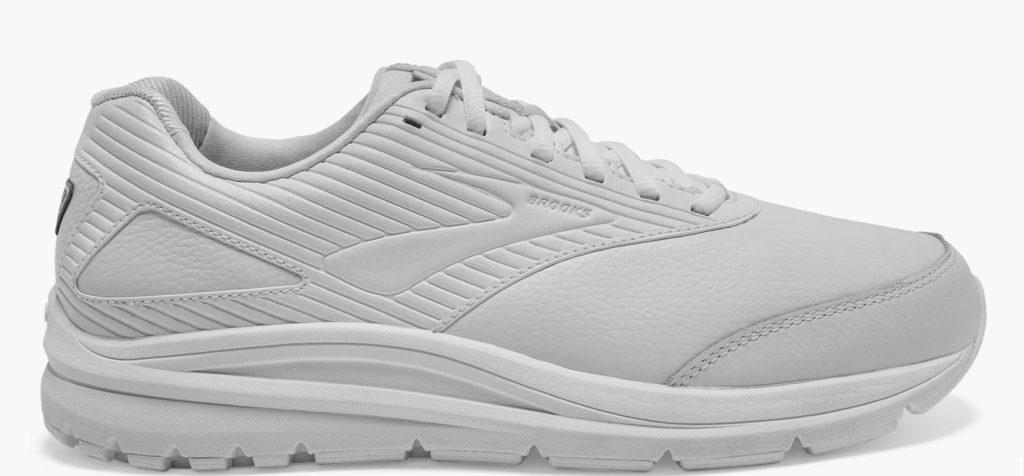
Specifications:
- Heel Stack: 35.7 mm (above average)
- Forefoot Stack: 23.5 mm (above average)
- Heel-to-Toe Drop: 12.2 mm
- Midsole Foam Density: 25.9 HA (balanced)
- Stability: Extended Progressive Diagonal Bar (PDB)
- Torsional Rigidity: 5/5 (uncompromising)
- Heel Counter Stiffness: 3/5
- Upper Material: All-leather
- Breathability: 1/5 (low)
- Colors: Typically available in black and white.
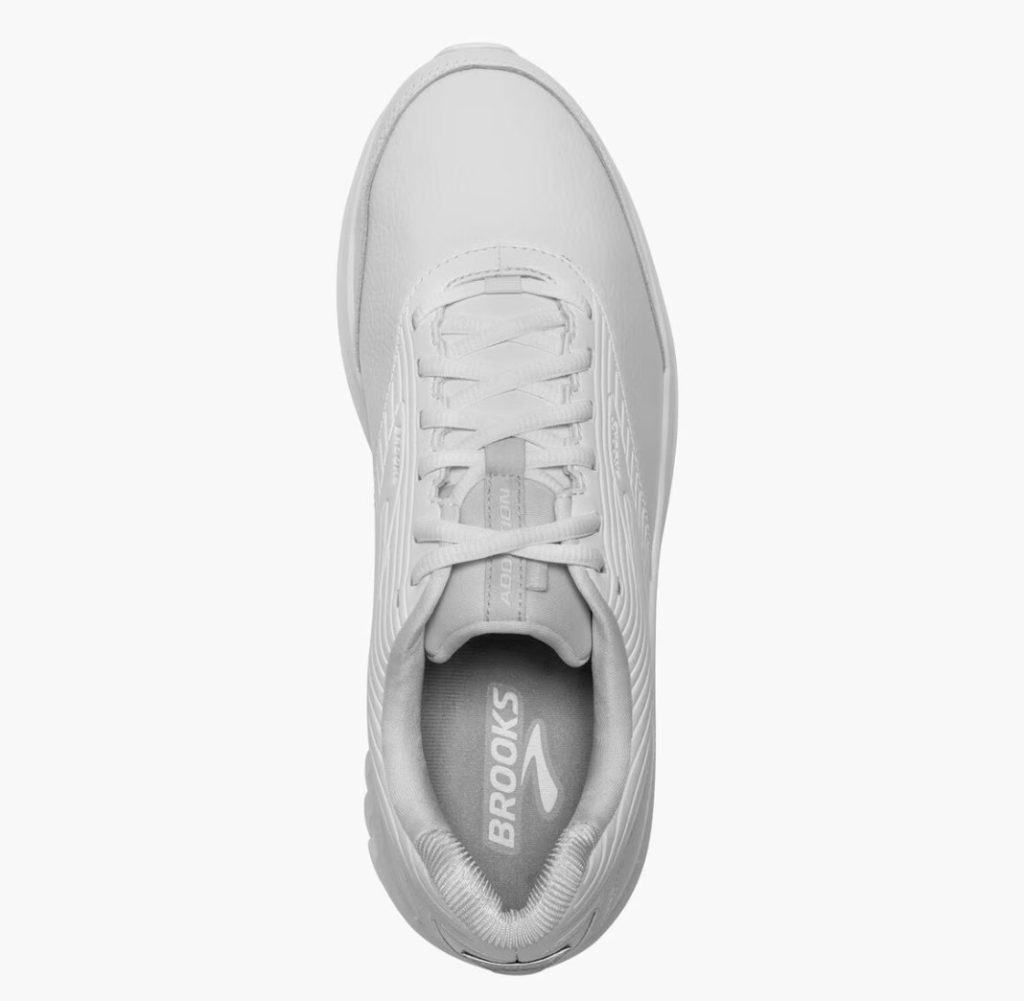
Why It’s the Best:
The Addiction Walker 2’s core strength lies in its Extended Progressive Diagonal Bar (PDB) in the midfoot, a stiff post designed to actively support your arch and prevent inward foot rolling (overpronation).
This traditional stability feature is incredibly effective, as evidenced by its uncompromising 5/5 torsional rigidity score in my manual tests. The platform’s generous cushioning (35.7/23.5 mm) perfectly balances the stiffness, ensuring comfort even under heavy loads, which is essential for alleviating pressure on the plantar fascia.
Pros:
- Unmatched stability and superior arch support.
- Broadly recommended by podiatrists for foot pain relief.
- Incredible abrasion resistance and overall durability.
- Thick, lasting cushioning that maintains its integrity.
- Wide and steady platform for secure strides.
- Excellent choice for colder and drizzly days.
- Provides a comfortable in-shoe feel.
- True to size and offers a consistent fit.
- Can easily match formal work attire, offering versatility.
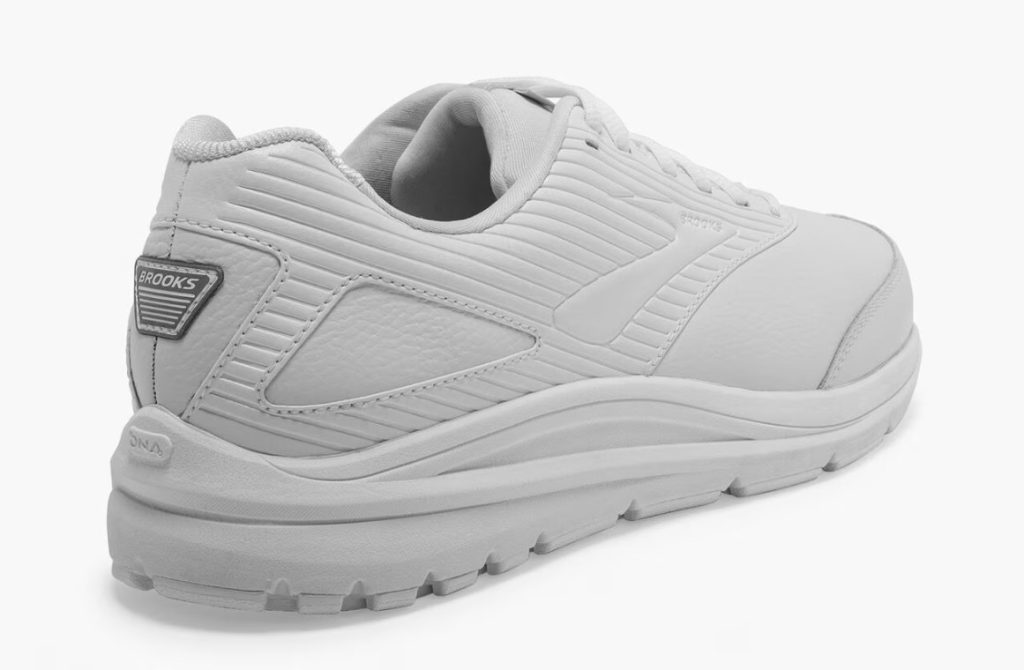
Cons:
- Heavier than many average walking shoes.
- Quite stiff, requiring a break-in period.
- Not as slip-resistant as some claims suggest.
- Lacks breathability, making it less suitable for warm weather.
4. Best Lightweight: Hoka Arahi 7
The Hoka Arahi 7 redefines expectations for plantar fasciitis-supportive walking shoes by masterfully blending an airy, lightweight build with effective comfort and gentle support. My lab analysis strongly affirms its status as the best lightweight option in this category, proving that you don’t need heavy, clunky shoes for stability.
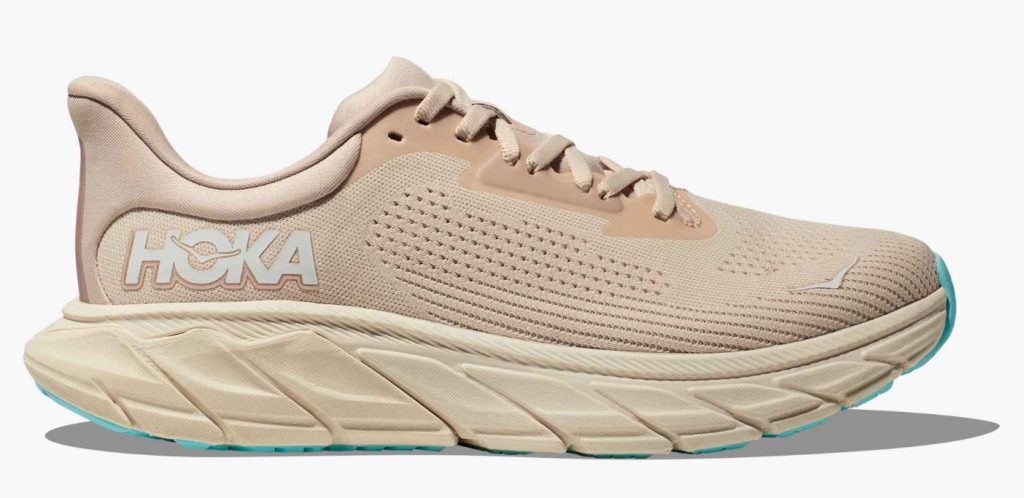
Specifications:
- Weight: 9.4 oz (266g) (significantly lighter than average 10.3 oz/293g for stability shoes)
- Heel Stack: 34.2 mm (above average)
- Forefoot Stack: 27.9 mm (above average)
- Midsole Foam Density: 26.6 HA (balanced)
- Stability: J-Frame™ technology
- Torsional Rigidity: 5/5 (extremely resistant to twisting)
- Flex Test Stiffness: 64.2% stiffer than average walking shoe
- Colors: Features Hoka’s signature vibrant and often multi-toned designs, including black, blue, and white variations.
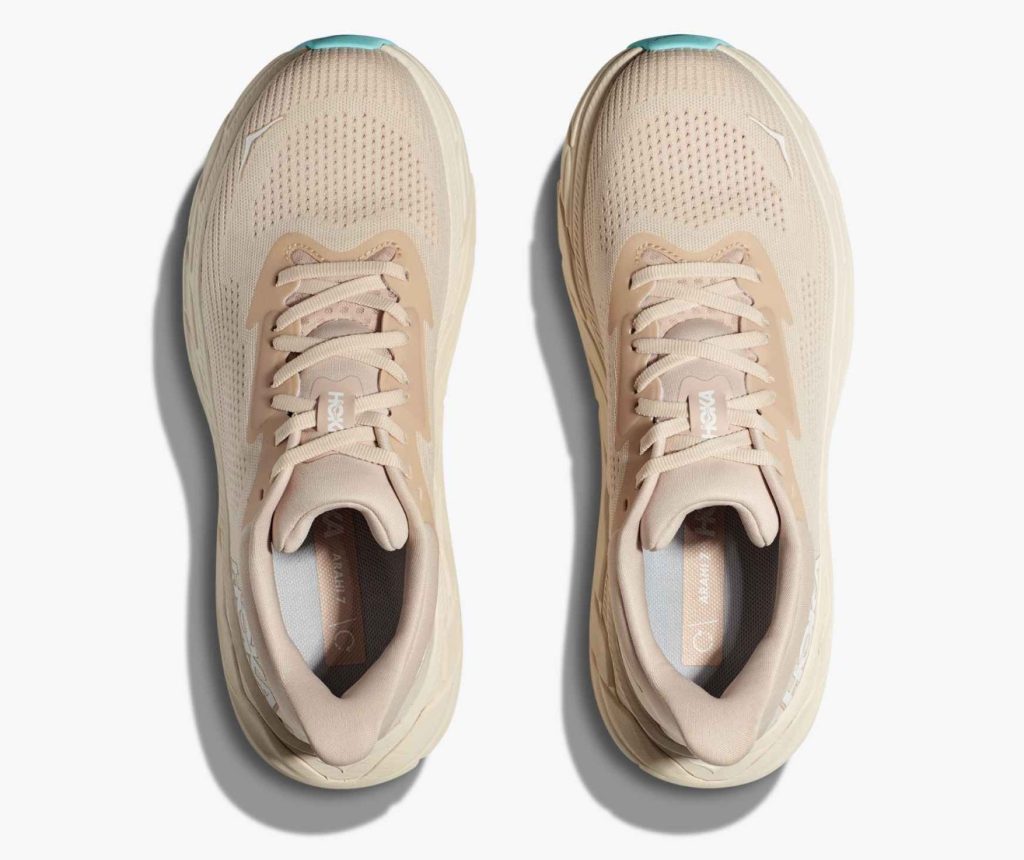
Why It’s the Best:
The Arahi 7’s primary appeal is its incredibly light nature, making each step feel effortless. This is a significant advantage when dealing with plantar fasciitis, as reduced weight can lessen overall foot fatigue.
Despite its lightness, it doesn’t skimp on support. Hoka’s J-Frame™ technology acts as a subtle guide for foot alignment, and my manual assessment confirmed its extreme resistance to twisting, earning a perfect 5/5 torsional rigidity rating. The above-average stack height (34.2/27.9 mm) combined with a balanced 26.6 HA foam composition provides ample cushioning to relieve pressure on your arches and heels.
Pros:
- Premium and comfortable upper material.
- Still surprisingly light for a stability shoe.
- Subtle yet highly effective stability features.
- Reasonably priced for the features offered.
- Provides excellent fit and secure lockdown.
- Features a plush tongue for added comfort.
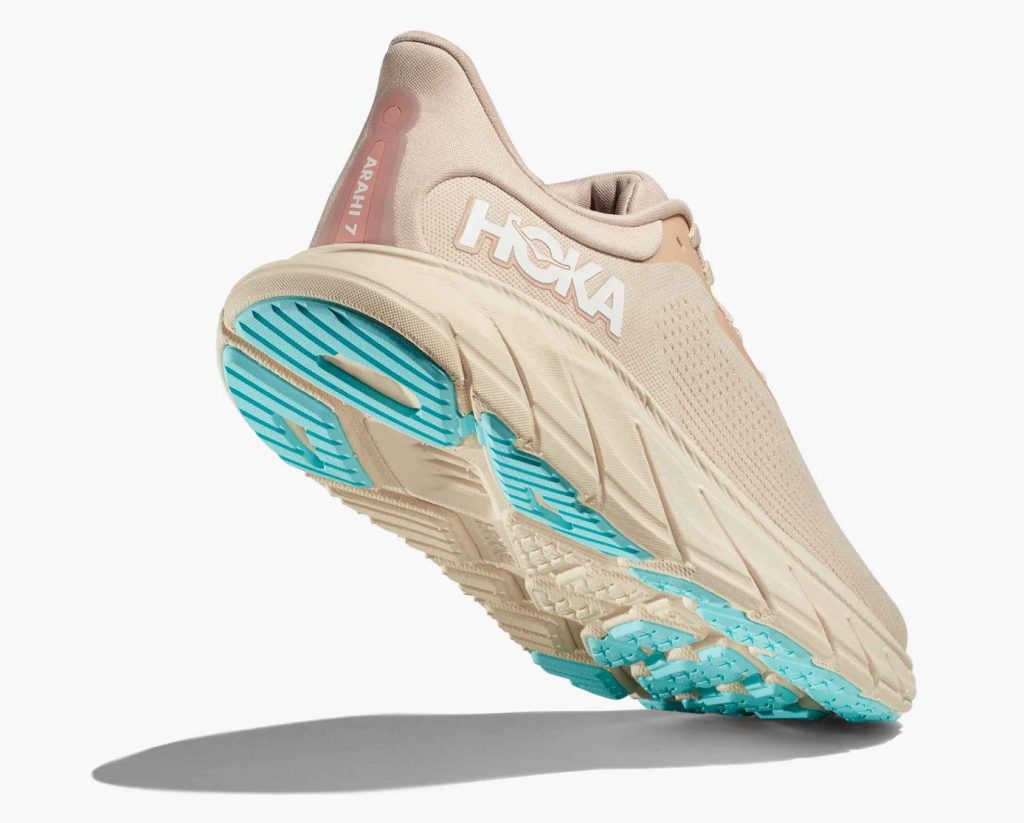
Cons:
- Limited breathability, less ideal for very warm conditions.
- Offers low energy return compared to some performance shoes.
- Primarily suited for narrow feet; not as accommodating for wider feet.
- Grip on certain surfaces could be improved.
5. Best Slip-Resistant: Hoka Bondi SR
In my quest for exceptional slip-free walking shoes for plantar fasciitis, the Hoka Bondi SR emerged as the clear winner. Its name (SR for Slip-Resistant) truly reflects its performance; I was genuinely impressed by its ability to navigate wet or icy paths without a hint of anxiety or loss of footing. Critically, my heels experienced profound comfort, and any familiar twinging pain was completely absent.
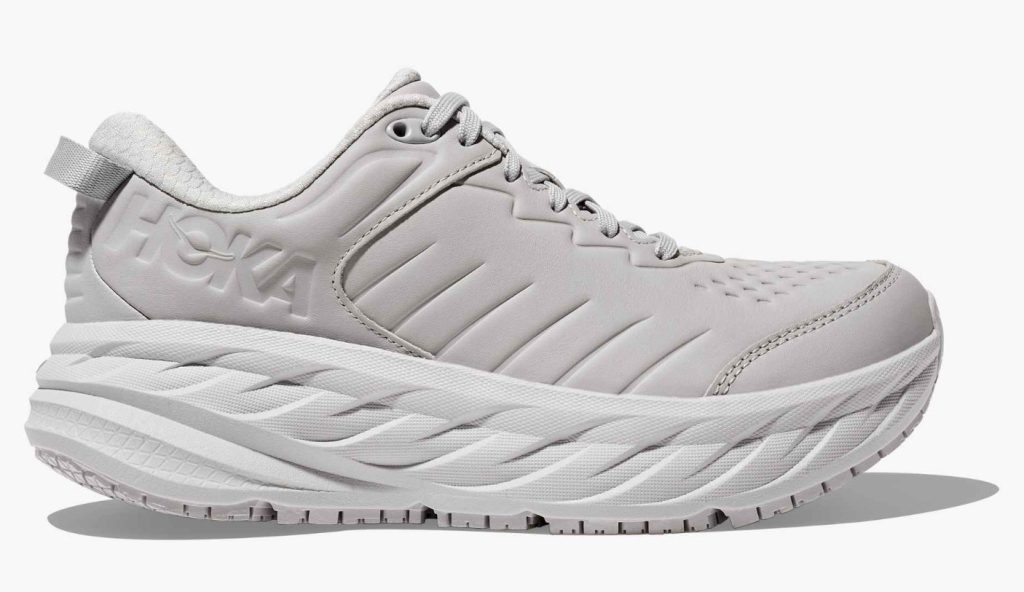
Specifications & Key Features:
- Heel Stack: 39.4 mm (23.9% thicker than average)
- Forefoot Stack: 31.2 mm (lab measured)
- Heel-to-Toe Drop: 8.2 mm (lab measured, brand states 6.0 mm)
- Midsole Foam Density: 20.4 HA (soft)
- Forefoot Width: 100.3 mm (2.5 mm wider than average)
- Outsole Hardness: 73.1 HC (3.7% softer than average)
- Outsole Durability (Dremel Test): 2.48 mm dent (compared to 1.4 mm average)
- Upper Material: Water-resistant leather
- Colors: Typically available in professional-friendly colors like black and white.
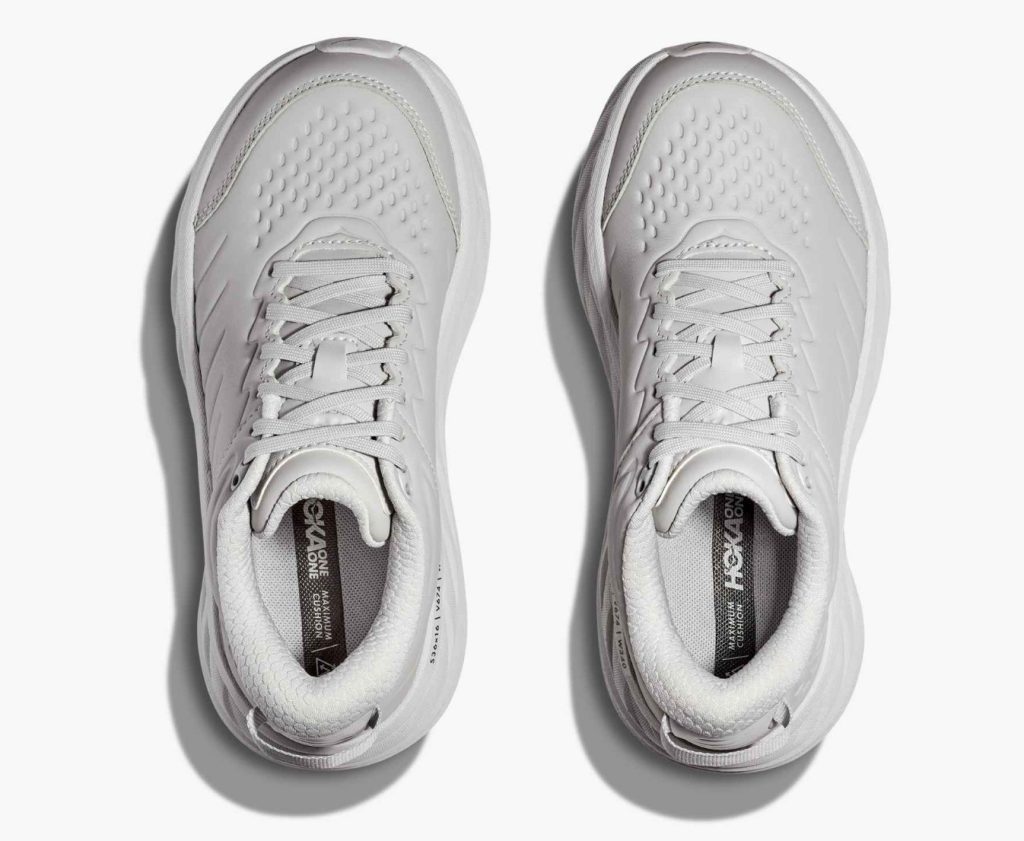
Why It’s the Best:
The Bondi SR’s standout feature is its truly superior slip-resistant outsole. Its softer-than-average hardness (73.1 HC) allows it to adhere exceptionally well to smooth and slick surfaces, providing crucial safety. For plantar fasciitis, the shoe’s generous 39.4 mm heel stack ensures ample support and protection for the heel, alleviating pressure points.
The accommodating forefoot width (100.3 mm) is also a significant plus, as overly narrow shoes can aggravate the condition. The water-resistant leather upper also adds to its practicality for various conditions.
Pros:
- Off-the-charts comfort for all-day wear.
- Extra-thick cushioning provides sustained support.
- Smooth heel-to-toe transitions enhance walking efficiency.
- Helps alleviate foot discomfort (podiatrist-approved design).
- Stable for a neutral shoe, providing a secure feel.
- Truly slip-resistant outsole for various terrains.
- Superior material quality, especially the leather upper.
- Water-resistant leather upper for protection.
- Accommodating toebox for comfortable toe splay.
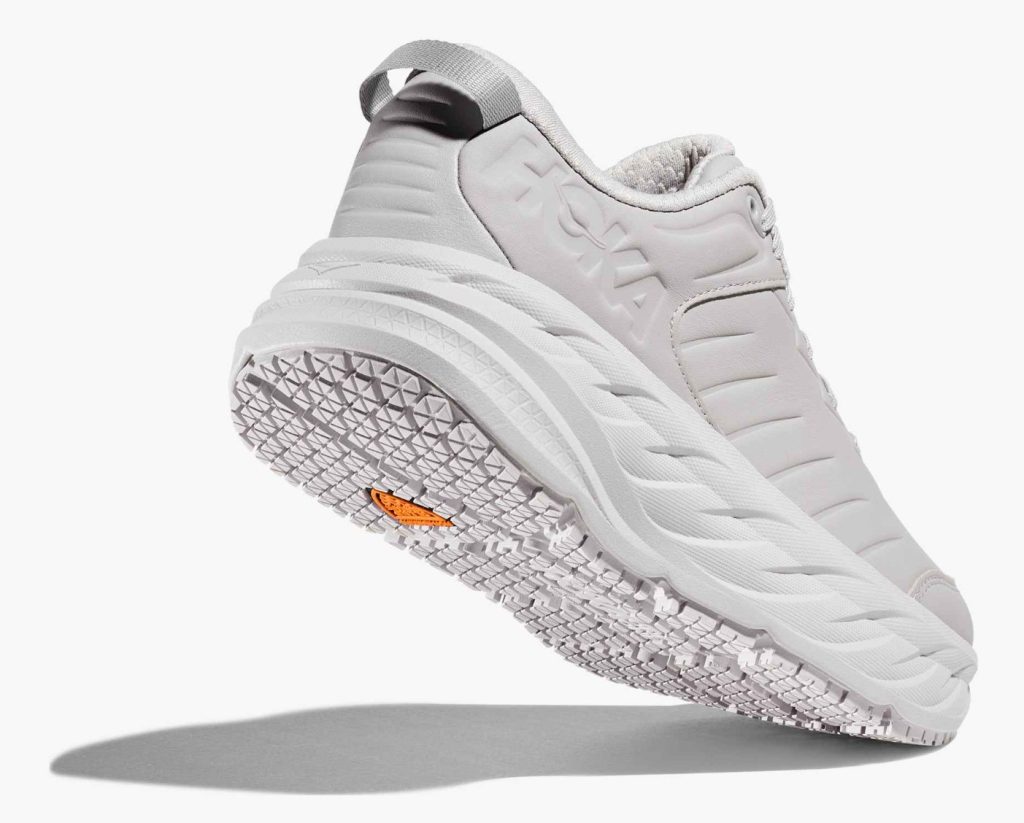
Cons:
- Can feel heavy and somewhat bulky.
- Not very breathable, which can be an issue in warmer climates.
- Outsole durability is moderate compared to some models.
6. Best for Wide Feet: Hoka Gaviota 5
My extensive search for the ideal walking shoe for plantar fasciitis combined with an accommodating fit for wide feet consistently led me back to the Hoka Gaviota 5. Through rigorous tests and lab results, this shoe proved itself. Its comfortable arch support and subtle stability features made me feel like I could walk endlessly without experiencing any pain, truly a blessing for wider foot types.
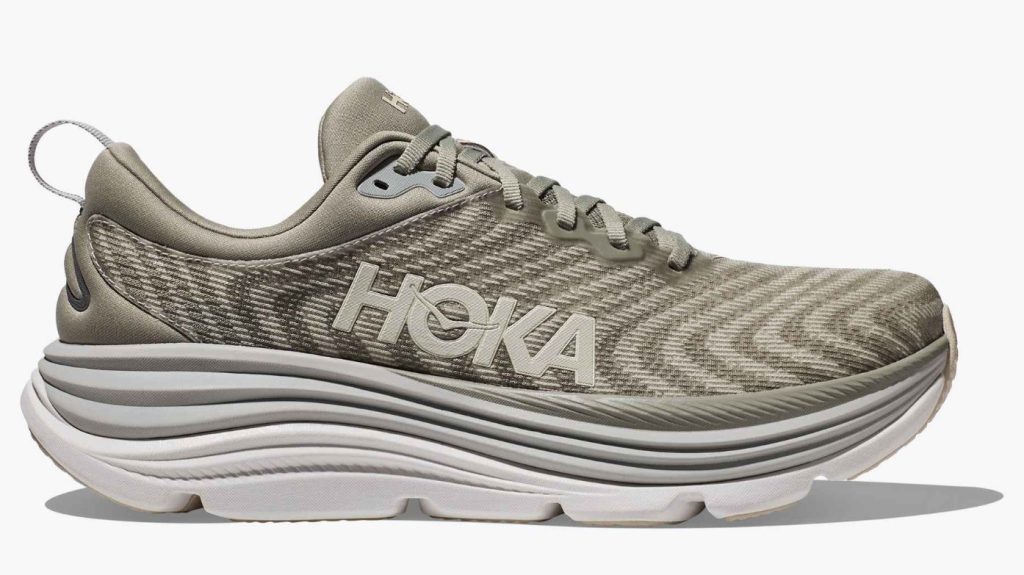
Specifications & Key Features:
- Toebox Width (widest part): 101.8 mm (above average)
- Toebox Width (at big toe): 83.1 mm (barely tapers)
- Forefoot Base Width: 111.0 mm (11.0 mm wider than average)
- Heel Base Width: 115.9 mm (15.9 mm wider than average)
- Midsole: Dual-density setup (12.9 HA plush, 22.0 HA firmer)
- Stability: H-Frame™ technology
- Torsional Rigidity: 4/5 (high)
- Longitudinal Stiffness: 14.3% stiffer than average
- Colors: Available in a variety of solid and multi-toned colors, typical of Hoka’s lineup.
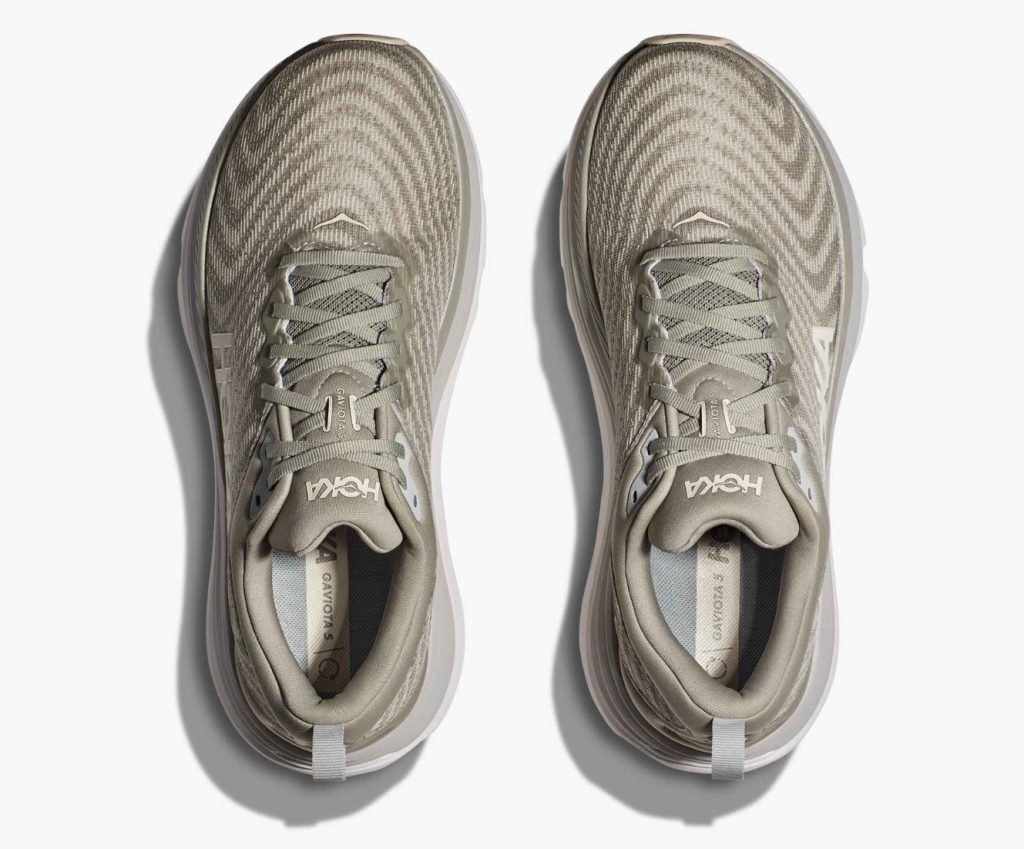
Why It’s the Best:
The Hoka Gaviota 5 shines for its exceptionally accommodating fit. Every measurement, from the toebox to the midsole, consistently registered above average. My toes had ample room to splay freely, and the significantly wider forefoot and heel base provided a solid, balanced platform crucial for stability.
Beneath the foot, a sophisticated dual-density cushioning system offers both plush comfort (12.9 HA) and firm, controlled steps (22.0 HA), alleviating localized tension. Hoka’s H-Frame™ adds structure to the midsole, preventing unwanted movements and achieving a high 4/5 torsional rigidity.
Pros:
- Remarkably stable, offering dependable support.
- Breathable and comfortable upper material.
- Lightweight for its size, reducing foot fatigue.
- A good stability option, even for forefoot strikers.
- Ideally suited for individuals with wide feet.
- Excellent choice for long runs or extended walks.
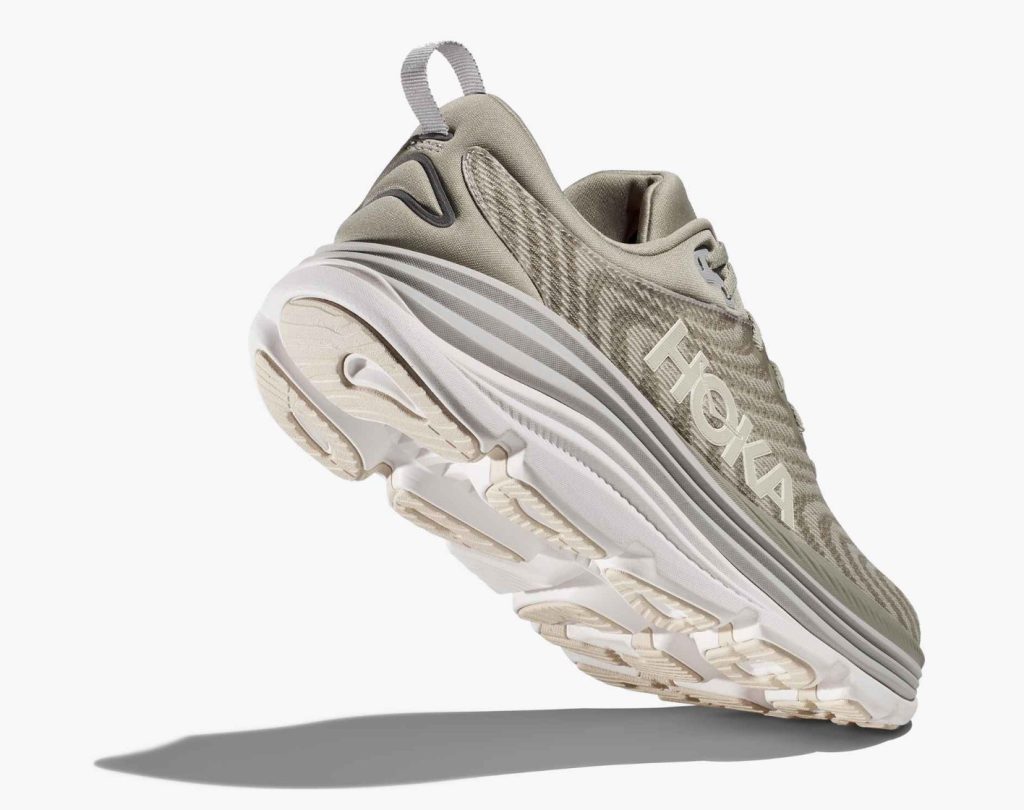
Cons:
- The low drop might pose issues for some heel strikers.
- Performs poorly in colder conditions, affecting foam properties.
- Not suitable for narrow feet, as the fit will be too loose.
- Lacks significant energy return for a more propulsive feel.
7. Best Budget: Skechers Arch Fit 2.0
At an unbelievable starting price of around $90, I firmly believe the Skechers Arch Fit 2.0 is worth every penny for anyone seeking the best walking shoes for plantar fasciitis on a budget. My lab tests and real-world walks consistently demonstrate how this 2nd edition elevates stability, providing a luxurious feel with its stacked yet balanced cushion. Its wide base offers non-intrusive support, making it an undeniable value pick compared to many pricier walking shoes.
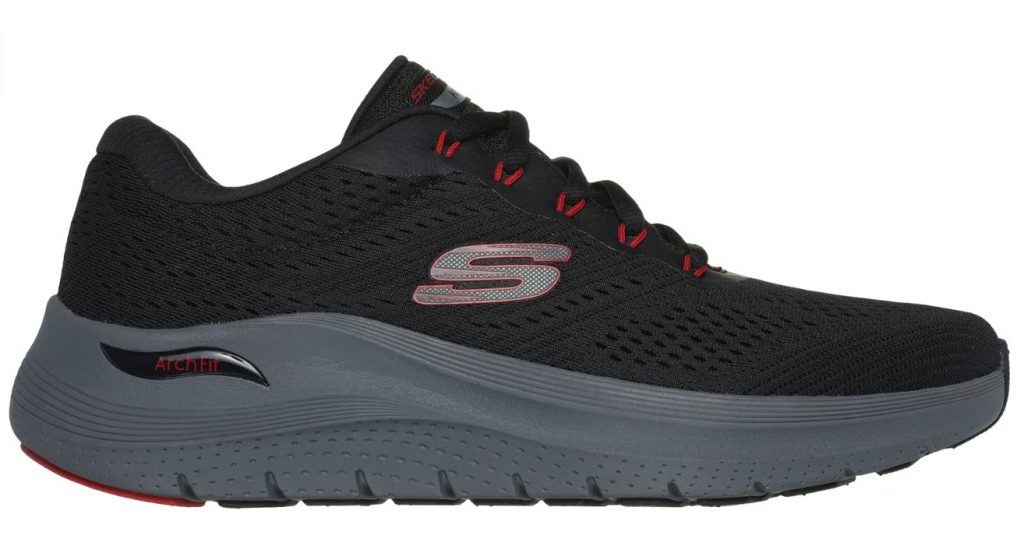
Specifications & Key Features:
- Heel Stack: 39.2 mm (one of the highest recorded for walking shoes)
- Forefoot Stack: 24.0 mm
- Heel-to-Toe Drop: 15.2 mm (steep, effective for Achilles/heel pressure relief)
- Midsole Foam Density: 30.4 HA (21.6% denser than average, contributing to balanced strides)
- Forefoot Landing Base Width: 114.5 mm (wider than average)
- Heel Landing Base Width: 90.9 mm (wider than average)
- Longitudinal Stiffness (Bend Test): 15.7% more resilient than average
- Breathability: 2/5 (poor)
- Colors: Commonly available in black, white, gray, and some limited seasonal colors.
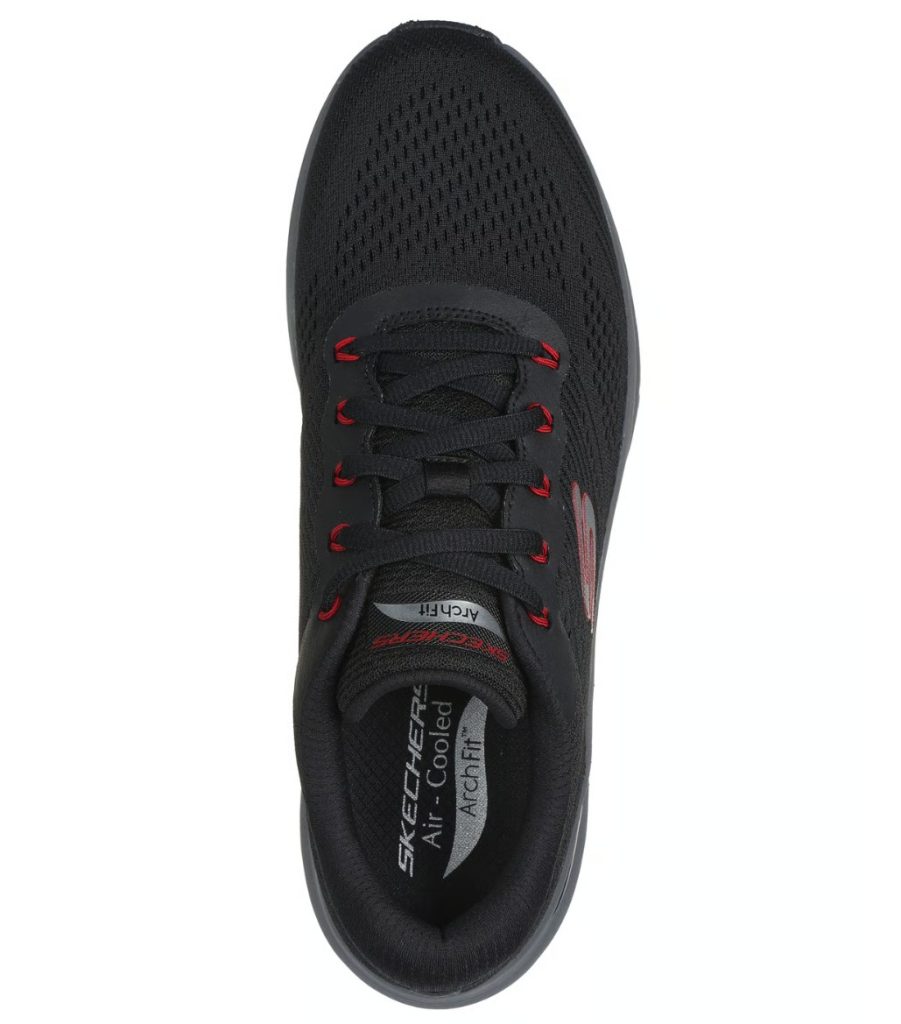
Why It’s the Best:
The Arch Fit 2.0 truly defies its budget price with impressive cushioning and stability. Its towering 39.2 mm heel stack, coupled with a steep 15.2 mm drop, is outstanding for relieving pressure on your Achilles and heels – a direct benefit for plantar fasciitis. The foam maintains a firm yet comfortable density (30.4 HA), ensuring it won’t bottom out under heavy loads.
Further boosting stability is its wider-than-average landing base (114.5/90.9 mm), which helps you find secure footing with every stride. The midsole also offers good resilience, mitigating excessive motion.
Pros:
- Amazing support for those prone to overpronation.
- Tons of cushioning provides superior comfort.
- Wide and stable platform for secure steps.
- Lighter than its predecessor, the Arch Fit 1.0.
- Perfect for all-day wear and extended periods on feet.
- Features padded and cozy interiors for enhanced comfort.
- True to size, ensuring an accurate fit.
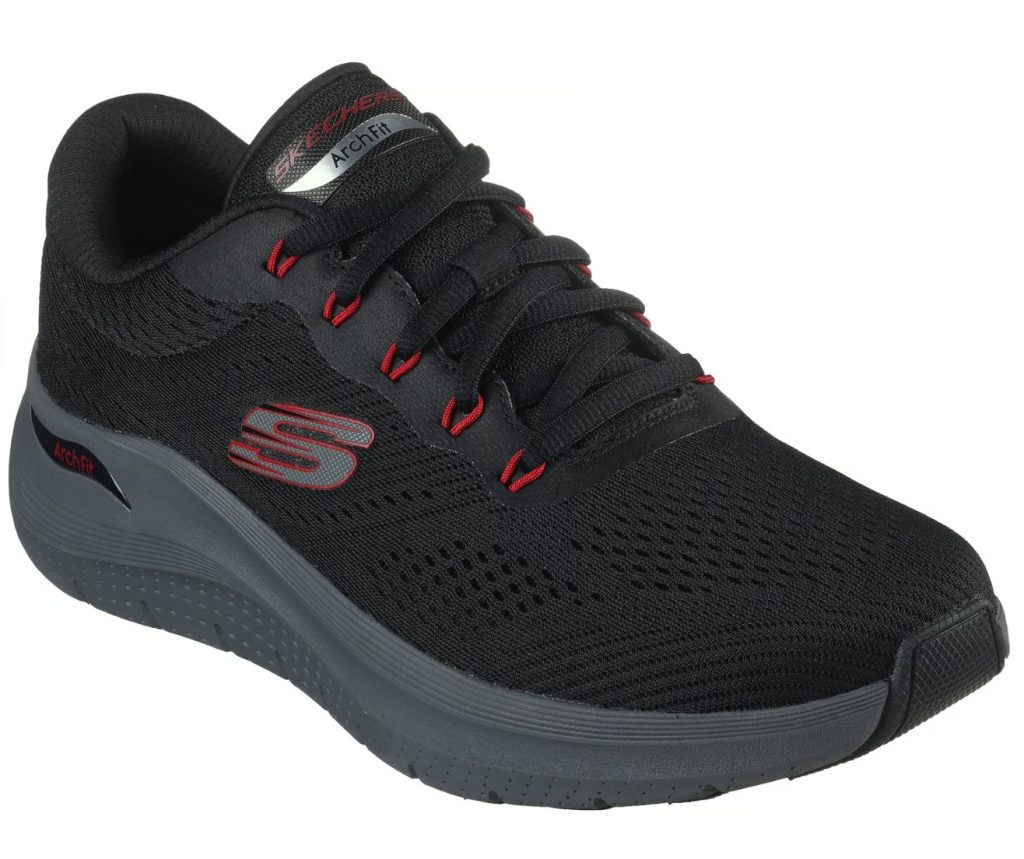
Cons:
- Very poor breathability, making it uncomfortable in hot weather.
- Lacks long-term durability in certain areas.
Understanding Plantar Fasciitis & How Shoes Can Help
Before diving deeper into shoe features, let’s make sure we’re on the same page about plantar fasciitis. It’s a common and often painful condition, typically characterized by pain in the heel and sometimes spreading to the midfoot. This pain occurs when the plantar fascia, a thick band of tissue connecting your heel bone to your toes, becomes inflamed. This inflammation can result from overuse, improper footwear, or certain biomechanical issues. Symptoms often include a severe heel pain in the morning or after periods of rest, which can worsen with weight-bearing activities.
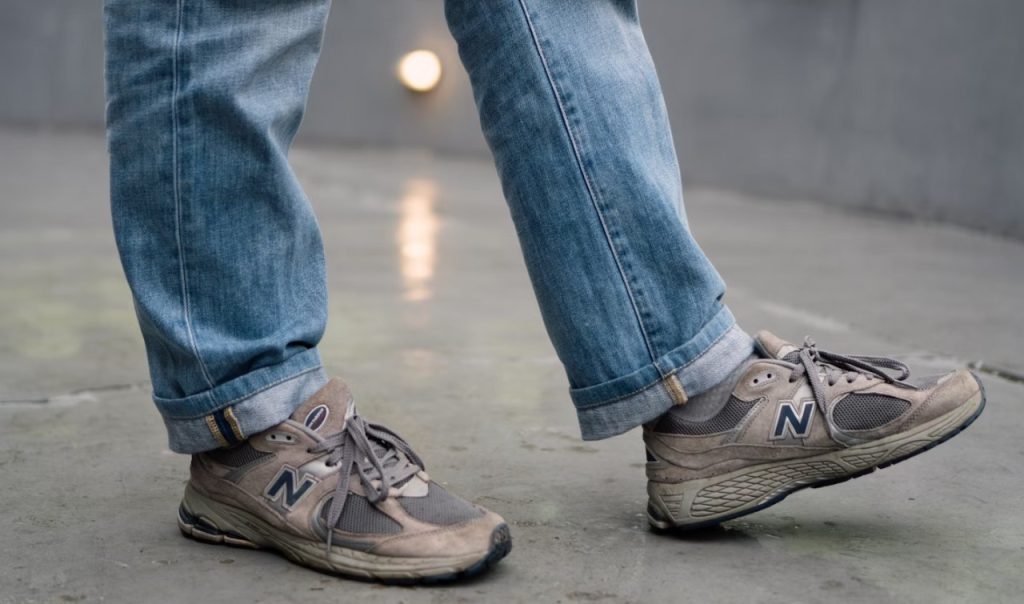
So, why do you need specific shoes for this condition? The right footwear plays a pivotal role in managing and alleviating symptoms by:
- Minimizing Impact: Reducing the shock your foot experiences with every step.
- Supporting the Arch: Helping to distribute pressure evenly across the foot.
- Stabilizing the Foot: Preventing excessive motion that can irritate the plantar fascia.
Key Features to Look for in Plantar Fasciitis Walking Shoes
When you’re on the hunt for the perfect pair of walking shoes for plantar fasciitis, remember that overall comfort is paramount. Beyond that, here’s what I look for, backed by both my testing and podiatric recommendations:
- Wide and Stable Sole: Essential for preventing wobbling and providing a secure base. Look for shoes with high torsional rigidity (3/5 or higher) and generous platform widths, especially in the forefoot and heel.
- Sufficient and Moderately Soft Cushioning: Critical for absorbing impact and reducing strain. Aim for a heel stack of at least 30mm and a heel-to-toe drop of 8mm or more. Midsole softness between 20 and 30 HA provides optimal balance.
- Firm and Supportive Heel Counter: A well-structured heel counter (3/5 stiffness or higher) prevents excessive heel movement, reducing irritation.
- Spacious Toebox: Crucial for allowing your toes to splay naturally, preventing discomfort and further foot issues.
- Arch Support (Optional but Recommended): Vital if you have flat feet or overpronation, helping to maintain proper alignment.
- Removable Insoles (Optional): Ideal if you plan to use custom orthotics for a personalized fit.
- Rocker Shoes: These can aid smoother transitions and evenly distribute pressure, but consult your doctor first.
Are Rocker Shoes Good for Plantar Fasciitis?
Yes, they can be. Shoes with a stiff rocker profile are often prescribed by podiatrists to alleviate plantar fasciitis pain. The curved shape acts like a rocking chair for your foot, promoting smoother heel-to-toe transitions and evenly distributing pressure across the foot. This can make walking feel more propulsive and reduce strain on the inflamed fascia.
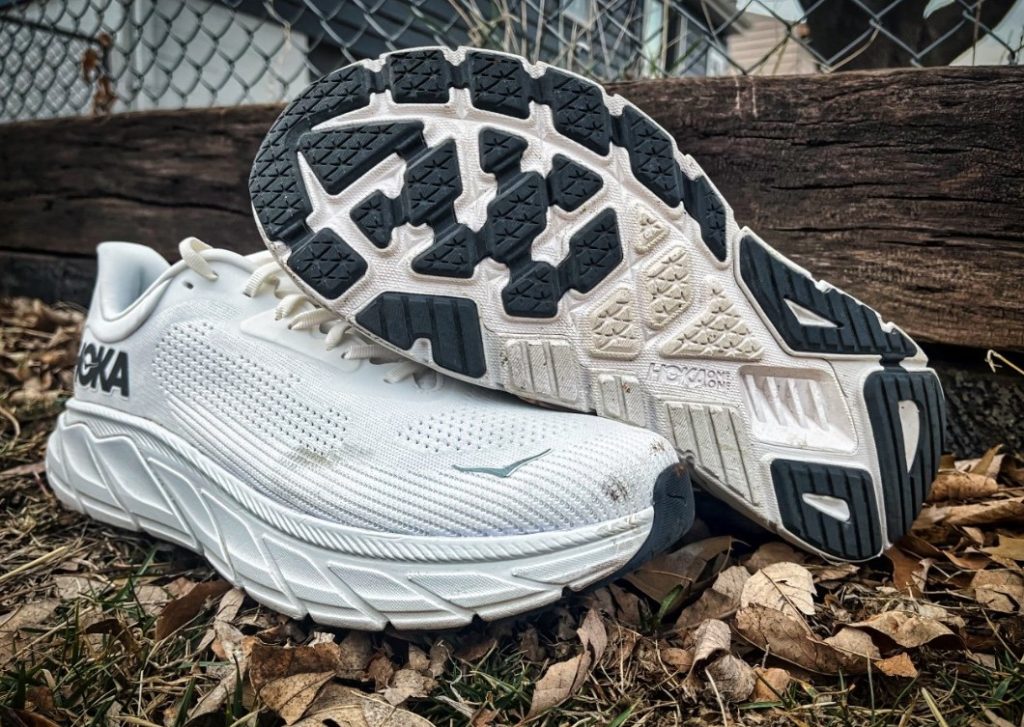
However, they can take some getting used to, and it’s always best to consult your doctor before incorporating them into your treatment plan.
How to Manage Plantar Fasciitis for Long-Term Relief
While the right footwear is a game-changer for plantar fasciitis, it’s just one piece of the puzzle. For comprehensive relief and long-term management, consider these additional strategies:
- Consult a Specialist: This is paramount. A podiatrist can provide an accurate diagnosis and tailor a treatment plan that may include physical therapy, stretching exercises, or custom orthotics. Don’t self-diagnose, as other conditions can mimic plantar fasciitis.
- Stretching Exercises: Regular stretching of both the plantar fascia and Achilles tendon can significantly alleviate tension and pain. Perform these stretches daily, especially first thing in the morning and before/after activity.
- Orthotic Inserts: Whether custom-made or over-the-counter, orthotic inserts can provide additional arch support and cushioning, helping to correct biomechanical imbalances.
- Ice Therapy: Applying ice to the affected heel area for 15-20 minutes several times a day can help reduce inflammation and numb the pain.
- Weight Management: Carrying excess weight puts additional strain on your feet and plantar fascia. Maintaining a healthy weight can significantly reduce pressure and alleviate symptoms.
What to AVOID if You Have Plantar Fasciitis
Just as important as knowing what to look for is understanding what to avoid. These footwear choices and habits can exacerbate your plantar fasciitis pain:
- High Heels and Stilettos: These shoes force your foot into an unnatural position, placing immense pressure directly on the plantar fascia.
- Flat Shoes (without support): Many flat shoes, like ballet flats, offer little to no arch support or cushioning, preventing proper weight distribution and stressing the fascia.
- Flip-Flops and Open Sandals (without support): Most traditional flip-flops lack the necessary arch support and stability your feet need. Even walking barefoot, especially on hard surfaces, should be avoided during acute flare-ups.
- Old, Worn-Out Shoes: Over time, shoe cushioning breaks down, and support features degrade. Don’t push old shoes to their limit; typically, active footwear needs to be replaced every 6-12 months depending on usage.
- Ignoring the Pain: Plantar fasciitis, if left untreated, can become chronic and may even lead to pain in other body parts due to compensatory walking patterns. Address the pain early to prevent further complications.
- Excessive Repetitive Motion: Activities like extended treadmill walking can worsen plantar fasciitis. Opt for lower-impact exercises like elliptical training or stationary cycling until symptoms improve.
FAQs About Plantar Fasciitis Shoes
How much cushioning do I really need in a shoe for plantar fasciitis?
Aim for ample cushioning, particularly in the heel (at least 30mm heel stack). The best cushioning balances softness (around 20-30 HA) with stability, preventing your foot from sinking too much.
Can I use my running shoes for walking if I have plantar fasciitis?
Many running shoes work for casual walks, thanks to their cushioning. However, for extensive walking or severe pain, dedicated walking shoes often offer more appropriate stability and design features for consistent walking mechanics.
What’s the ideal heel-to-toe drop for plantar fasciitis?
A higher heel-to-toe drop (at least 8mm, often 10-15mm) is generally beneficial. It helps reduce strain on the plantar fascia by shifting some pressure away from the heel.
Should I always look for shoes with arch support, even if I don’t have flat feet?
While crucial for flat feet or overpronation, everyone benefits from some degree of arch support to evenly distribute pressure. The most important thing is a comfortable, supportive feel under your unique arch.
How often should I replace my walking shoes if I have plantar fasciitis?
Replace them every 300-500 miles, or roughly every 6-9 months, even if they look fine. Internal cushioning breaks down, diminishing shock absorption and stability, which can quickly lead to pain returning.
Conclusion: Step Towards a Pain-Free Future
Navigating the world of footwear with plantar fasciitis can feel overwhelming, but I hope this comprehensive guide has brought you clarity and confidence. Choosing the best walking shoes for plantar fasciitis is not just about buying a new pair of shoes; it’s about investing in your comfort, mobility, and overall quality of life. My rigorous testing and detailed analysis aim to ensure that you find a pair that genuinely works for you, providing the support, cushioning, and stability your feet desperately need.
Remember, every step towards finding the right footwear is a step closer to a pain-free future. If you have specific questions about your foot type, need further personalized recommendations, or want to explore our brand services, don’t hesitate to reach out. I’m here to help you find that perfect fit and get you back to walking comfortably again.
Connect with me directly on WhatsApp for personalized advice and additional support.



